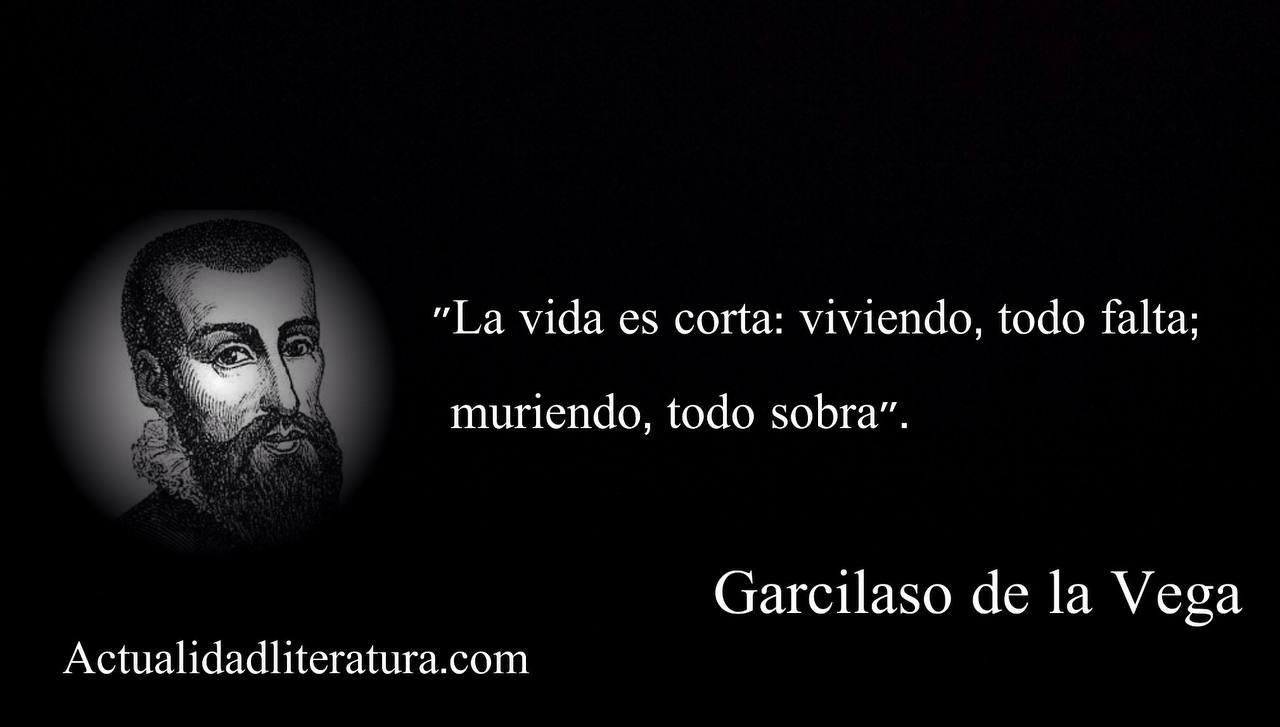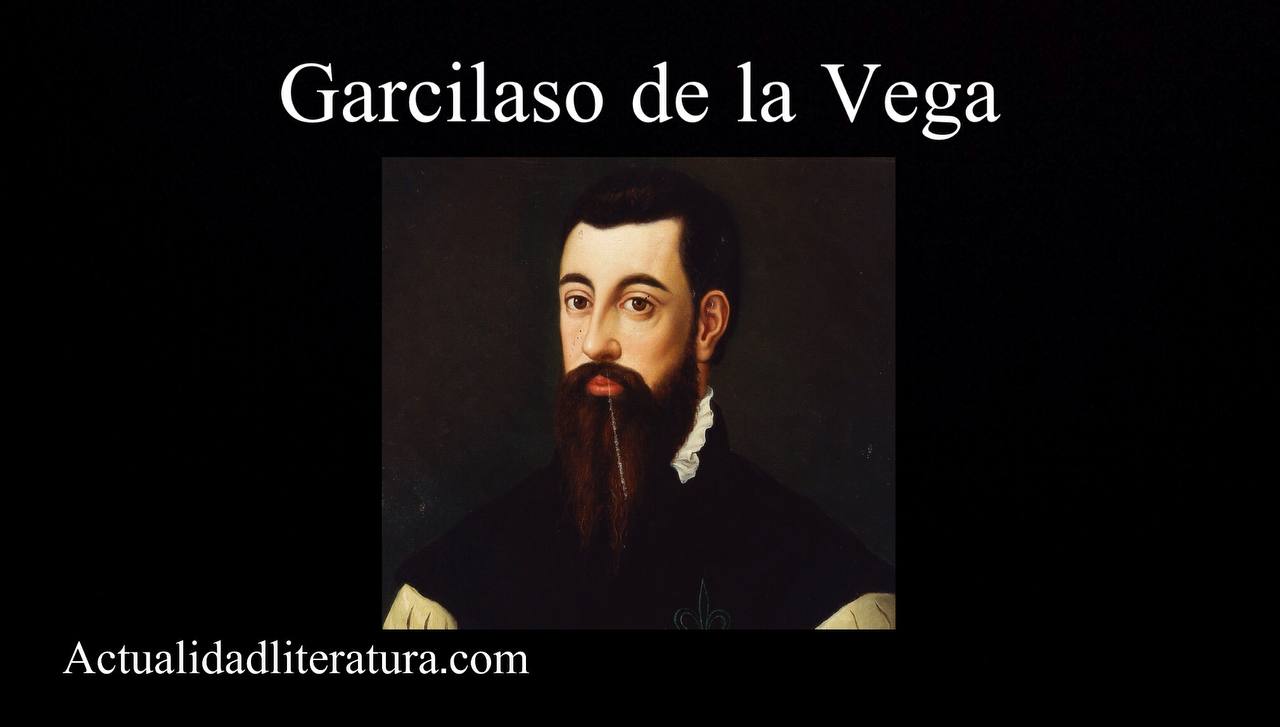
Quote by Garcilaso de la Vega
The work of Garcilaso de la Vega is considered essential within the expressive forms of Renaissance poetry in the Spanish language. In fact, the poet from Toledo is recognized as one of the pioneers of poetry during the so-called Spanish Golden Age. However, he never saw any of his creations written about him published in his lifetime.
It was his great friend Juan Boscán (1487 - 1542) who compiled the poetic production of Garcilaso and published it (post-mortem) together with several of his poems in 1543. Then, in 1569, a printer from Salamanca published the work of the composer from Toledo individually. Later in the same century, other poems —unpublished at the time— were included in the catalog of the Spanish poet known today.
The works of Garcilaso de la Vega
First publication of his poems
Made between 1526 and 1535, The little work preserved to date by Garcilaso appeared for the first time in The works of Boscán with some of Garcilaso de la Vega (1543). However, some historians claim that he probably wrote traditional lyrics and became a well-known poet among the Castilian courts during his youth.
In any case, Juan Boscán was key to the adaptation of hendecasyllable verse (italic) to the Castilian metrical composition by Garcilaso. The latter exquisitely adjusted the idiomatic structure of Castilian to Italian accentuation. In the same way, he incorporated the neoplatonic poetic contents typical of the Tana poetry of the Renaissance.
Inspiration and influences
Boscán was also important for Garcilaso's appreciation of the poetry of the Valencian gentleman Ausiàs March. Another important figure in the life of the Spanish composer was Pedro de Toledo, who became Viceroy of Naples. Certainly, Garcilaso's two stays (1522-23 and 1533) in the southern Italian city marked the incorporation of Petrarchan traits in his poetry.
In 1526, the Toledo poet met Isabel Freire de Andrade, one of the ladies of Isabella of Portugal when the future empress married Carlos I. According to some academics, the Portuguese maiden appears as the shepherdess Elisa in the verses of Garcilaso de la Vega. Apparently, this was affected when she married Don Antonio de Fonseca, councilor of Toro (Castilla) in 1529.
Other loves worth mentioning
In 1521, Garcilaso fathered an illegitimate son —although included in his will— with Guiomar Carrillo, known as the first love of the Toledo poet. This lady is referred to as the Galatea in the Eclogue I. Additionally, Magdalena de Guzmán (a cousin) is Camila in Eclogue II and the beautiful Beatriz de Sá, wife of her brother Pablo Laso (also referred to as Elisa).
Characteristics of the lyrics of Garcilaso de la Vega
The work of Garcilaso de la Vega It consists of three eclogues, four songs, forty sonnets, an epistle, an ode and eight songbooks. traditional type (ordered in octosyllabic verses). In this compendium it is possible to appreciate in all its dimension the renewal of the themes and genres used within the Renaissance lyric.
Moreover, some of Garcilaso's sonnets and eclogues are considered by historians to be a faithful representation of the ideal Renaissance gentleman. At the same time, his verses definitively incorporated the metrics of Italian lyric poetry to compositions in Spanish.
Themes
Most of Garcilaso's sonnets are of a love nature, among which, some written in his youth show characteristics of the traditional songbook. Instead, those sonnets created in a more mature age of the Toledo poet show an approach more characteristic of Renaissance sensibility (also palpable in their songs).
Sonnet XXIII
"As long as rose and lily
the color is shown in your gesture,
and that your ardent, honest look,
with clear light the serene storm;
and while the hair, which in the vein
of gold was chosen, with swift flight,
by the beautiful white neck, upright,
the wind moves, spreads and messes up;
take from your happy spring
the sweet fruit, before the angry weather
cover the beautiful summit with snow.
The icy wind will wither the rose,
light age will change everything,
for not making a change in their custom”.
Nature in Garcilaso's work
Moreover, Garcilaso's eclogues constitute the maximum expression of his poetic talent. In them, several shepherds deliberate on questions related to love in a context of idealized nature. Despite the enumeration Eclogue II It was the first written by the Castilian composer and, among the three of his authorship, the only one to present a dramatic plot.
Eclogue II (fragment)
“Albanian
Is this a dream, or indeed I play
the white hand? Ah, dream, you are mocking!
I was believing like crazy.
Oh take care of me! you are flying
With quick wings through the ebony door;
I lay here crying.
Isn't it enough the serious evil in which it awakens
the soul lives, or to put it better,
is dying of an uncertain life?
salicium
Albanio, stop crying, qu'en oíllo
I grieve
Albanian
Who present 's to my mourning?
salicium
Here's who will help you feel.
Albanian
Are you here Salicio? great consolation
I was in any bad your company,
but I have in this on the contrary the sky”.
Biography of Garcilaso de la Vega

Garcilaso de la Vega
Historians do not have a consensus regarding the year of birth of Garci Lasso de la Vega (christening name). One of the certainties in this regard is that he was born in Toledo between 1491 and 1503, within a family of the Castilian nobility. He was orphaned of his father at an early age, but this did not prevent him from soaking up the political plots of the kingdom of Castile.
His youth in the Castilian courts
The young Garcilaso received a very complete education for his time in the Courts of the kingdom. There, he learned several languages (Latin, Greek, Italian and French) and met Juan Boscán, to whom he probably owes his predilection for Levantine poetry. In 1520, the poet became a royal soldier; since then he participated in numerous military campaigns in the service of King Carlos I.
On November 11, 1523, Garcilaso de la Vega was appointed Santiago in the San Agustín church in Pamplona. In the following years, he continued to participate in important military expeditions (he was seriously injured in one of them). Meanwhile, in the year 1525 he married Elena de Zúñiga, sister of Carlos I of Spain, with whom he had five children.
Last military campaigns, exile and death
In 1530, Garcilaso was part of the royal excursion of Carlos I to Bologna, where he became Charles V, Holy Roman Emperor. Within a year, he was banished (for participating in an unauthorized wedding) to the island of Schut (Danube), before settling in Naples. In 1535, he received two lance cuts to his mouth and right arm during the Tunis Day.
The following year, Charles V went to war against Francis I of France. Soon after, Garcilaso was appointed field master for the expedition through Provence. There, he was seriously wounded in combat during the assault on Muy's fortification. Finally, the Toledo poet and soldier died in Nice, on October 14, 1536.